 |
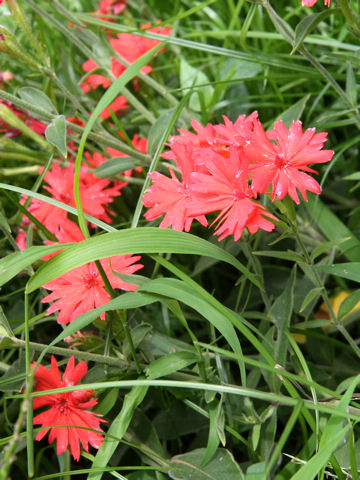

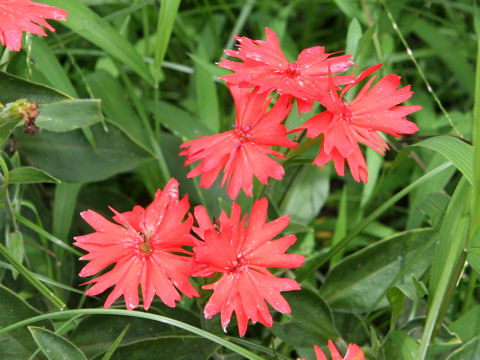

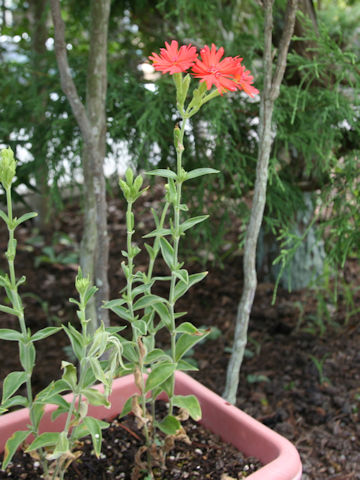

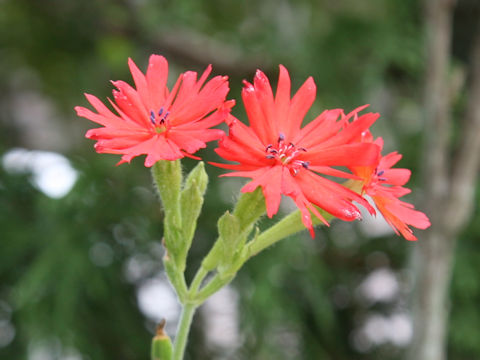

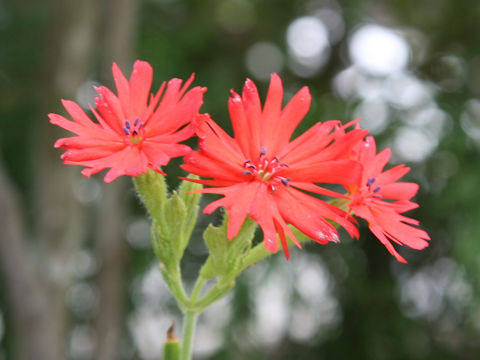

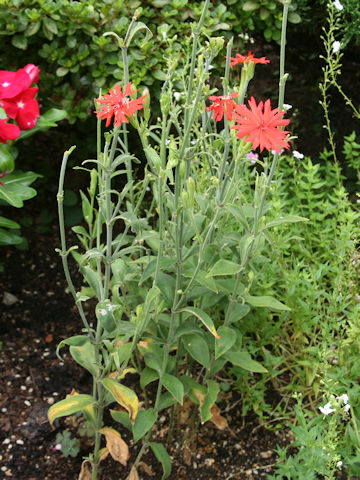

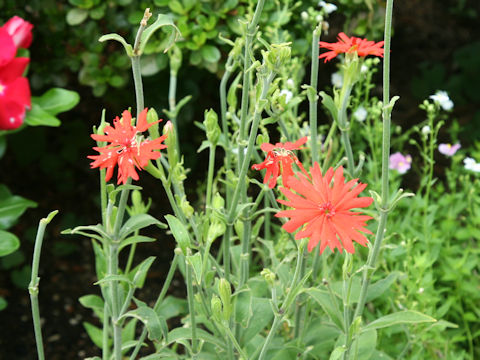

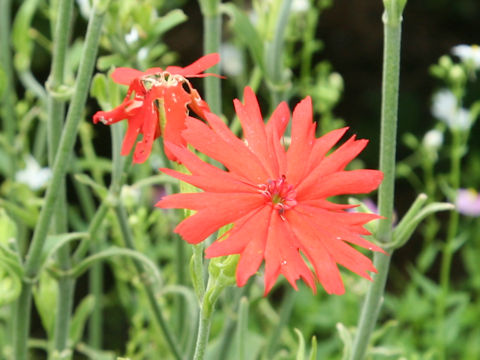

|

|
中国の中・南部が原産です。疎林や藪のある草地に生え、高さは50〜100センチになります。葉は楕円形から披針形で、縁には繊毛があります。7月から8月ごろ、濃い赤色の花を咲かせます。花弁には切り込みがあります。「せんのう」は室町時代の初期に渡来しました。花は、夏の茶花として使われていました。和名は、かつて京都の嵯峨にあった仙翁寺に伝わったころから。中国語では「剪紅紗花(jian hong sha hua)」と呼ばれます。
|

|
ナデシコ科センノウ属の多年草で、学名は Lychnis senno。英名はありません。
|

|
The Lychnis senno belongs to Caryophyllaceae (the Carnation family). It is a perennial herb that is native to central and southern China. This herb grows in sparse forests and scrub grasslands, and can reach 50-100 cm in height. The leaves are elliptic to lanceolate and ciliate at margins. The deep red fowers bloom in July and August. The petals are notched. It was introduced into Japan in the early days of Muromachi Era (about 670 years ago). The flowers were used as summer tea flowers. The Japanese name comes from the time it was introduced to Senoji Temple in Saga, Kyoto. In Chinese, it is called "剪紅紗花" (jian hong sha hua).
|

|
[上・中1] 東京都文京区「小石川植物園」にて、2009年08月09日撮影。
[中2〜中4] 宮城県大河原町大谷にて、2023年08月19日撮影。
[中5〜6・下] 同上にて、2024年08月20日撮影。
|







